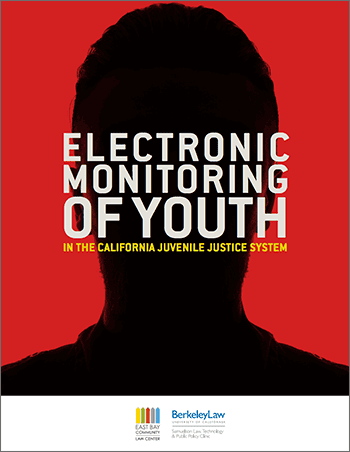
The use of electronic monitoring in the criminal justice system has grown exponentially in recent years. Despite this rapid expansion, little is known about how this technology is being used on youth. This report is the first to examine juvenile electronic monitoring rules and policies across an entire state.
The report represents a joint effort by U.C. Berkeley School of Law’s Samuelson Law, Technology & Public Policy Clinic and the East Bay Community Law Center. It reviews juvenile electronic monitoring program rules and policies in all California counties that use electronic monitoring on youth (51 of 58 do so).
Although generally perceived as a less punitive alternative to incarceration, electronic monitoring can be overly burdensome: it often entails home confinement, invasive surveillance, and high fees. As the report demonstrates, programs can impose dozens of strict and inflexible rules on participants. Financial burdens imposed by electronic monitoring programs disproportionately hurt low-income families. Personal privacy violations are also a concern.
The report is based on documents gathered from counties across California. Those documents are contained in the Complete Appendix. Because the records are voluminous, we excerpted key documents and compiled them into two appendices. The Terms and Conditions Appendix contains the program rules for each county. The Policy Appendix contains policy records for each county.
We are also providing an example of a public records act request, to aid others in obtaining documents of the type we gathered.